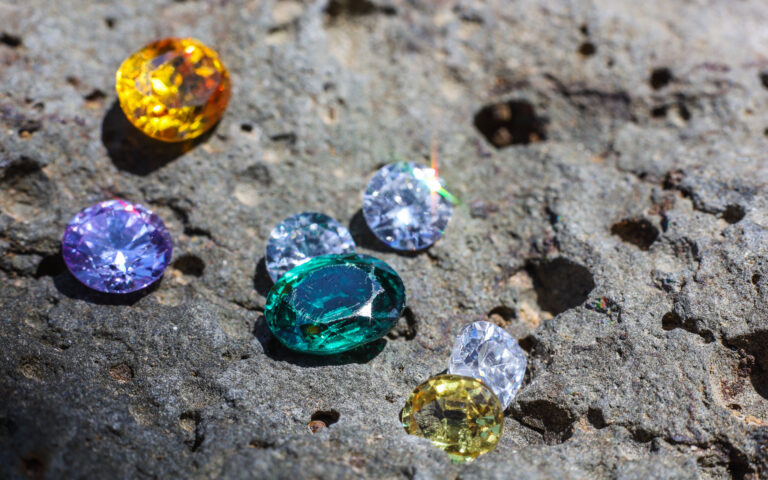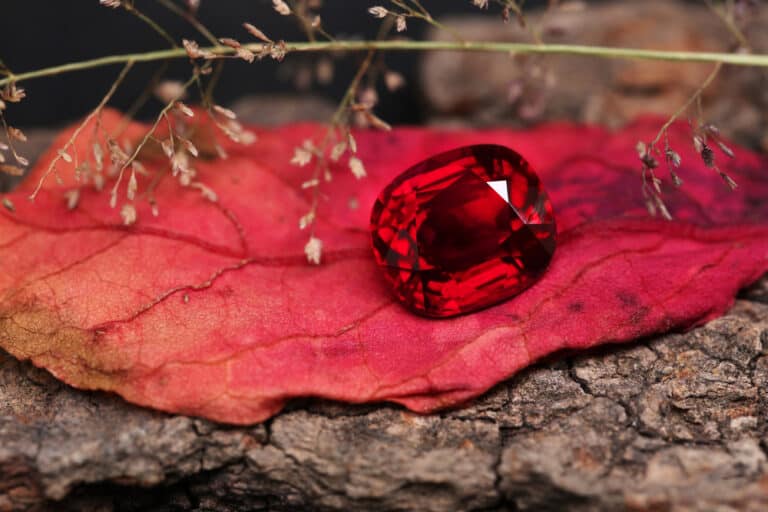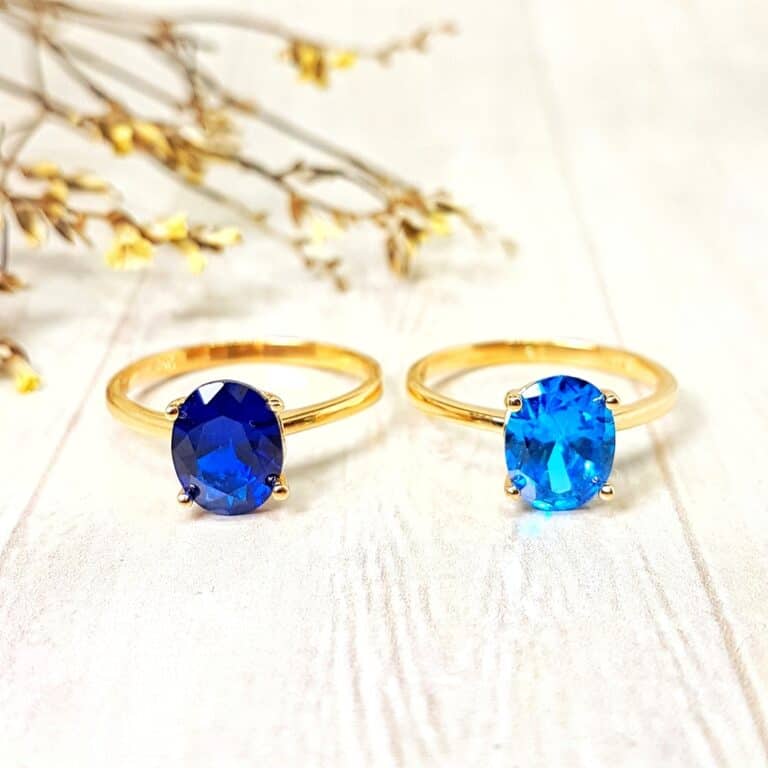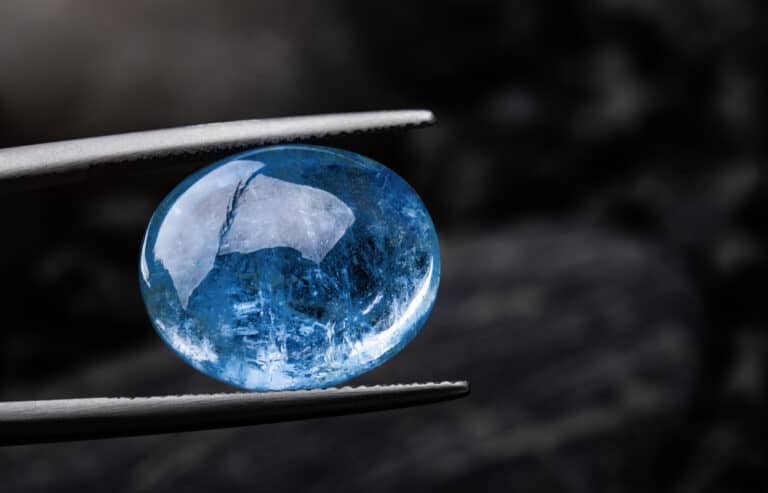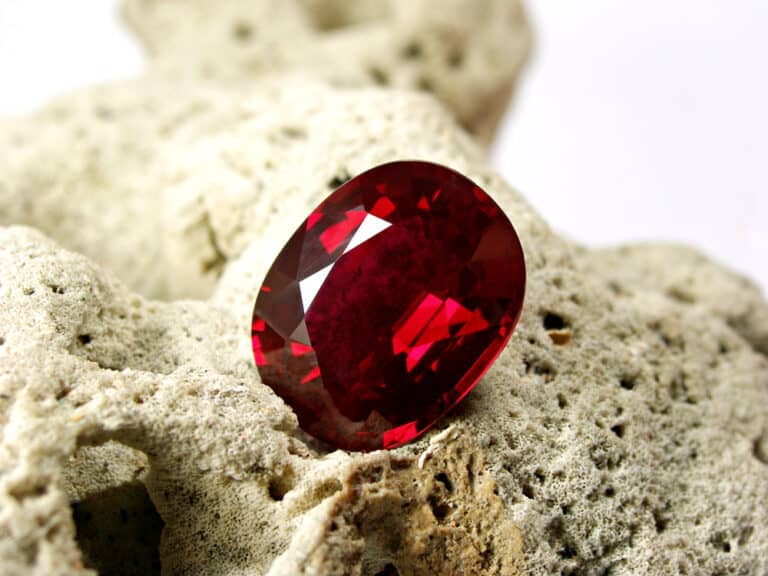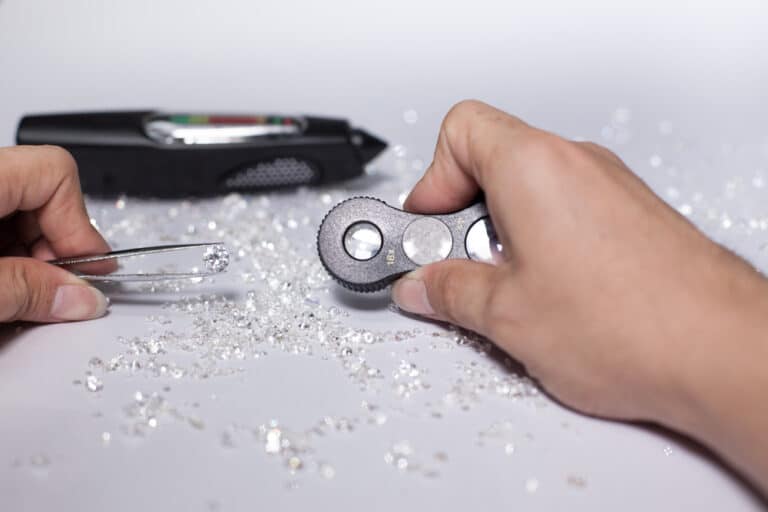Rubies and sapphires are the most beautiful, rare, and expensive gemstones ever discovered. The two precious gemstones are constantly traded on global financial markets, placed inside some of the most exquisite pieces of jewelry, and are known as being the most durable substances known to man. However, are there any differences between rubies and sapphires?
Scientifically speaking, there is no major difference between ruby and sapphire gemstones as they are variations of a substance known as corundum. However, Ruby is the only red substance within the corundum spectrum, meaning that any other visible color will be labeled sapphire.
Corundum is a crystalline derivative of aluminum oxide, responsible for creating the spectacular colors visible in the most expensive gemstones. Sapphire and ruby are both parts of the corundum family, although ruby has more chromium which is responsible for its striking red colors. The similarities have left many wondering if a ruby is a red sapphire in disguise.
Are There Any Differences Between Rubies And Sapphires?
In scientific terms, rubies and sapphires are identical substances with a few minor but notable differences in their chemical composition.
Sapphires and rubies are derived from a compound known as corundum, an individual crystalline structure within aluminum oxide. However, aluminum oxide is known to have various chemical impurities that form periodic elements such as titanium, iron, and chromium.
Moreover, the numerous impurities in aluminum oxide create chemical reactions that result in corundum crystals exemplifying a variety of spectacular but distinctive colors such as yellow, brown, grey, purple, green, and red. It should be noted that the color of ruby can only be red, meaning that a crystalline structure that is brown, yellow, grey, purple, or blue will be defined as sapphire.
Chromium is an important and influential compound found within the impurities of aluminum oxide. The reaction of chromium and other impurities within aluminum oxides, such as titanium or iron, directly results in rubies obtaining their distinctive and striking red color. In addition, any other color other than red derived from within corundum will be classified as a sapphire gemstone.
In contrast to rubies, sapphire gemstones always contain a trace amount of titanium, chromium, and iron. Over the last few centuries, sapphires have become closely associated with the color blue; however, all non-red colored corundum gemstone derivatives are labeled as sapphires within the scientific community and global jewelry trade.
Many people cannot distinguish between pink sapphires or rubies by judging individual gemstones with the naked eye. To a trained professional, the differences between the two similar gemstones and their chemical compositions are distinct, with most favoring rubies due to their rarity, unique color schemes, and luster.
Origins Of Sapphire And Ruby
Rubies and sapphires were discovered thousands of years ago, with the gemstone being globally revered due to their luster, hardness, rarity, and durability.
Rubies and sapphires were discovered when Latin was still a widely spoken language. “Rubeus” is the Latin word for red, which is a clear indication that ruby gemstones have always been closely associated with various shades of red. Conversely, sapphire gemstones obtained their name from the Latin word “Saphirus,” which means blue.
Over many centuries, blue sapphires were unanimously treasured and rare gemstones. However, ruby gemstones have become exponentially more popular over the last century due to their striking and distinctive red color. In addition, identification and mining techniques have improved to the point where it is profitable to harvest tiny red rubies.
Furthermore, red ruby gemstones remain incredibly rare. Rubies are far rarer than diamonds and even sapphires despite being derived from the same chemical compound. Since its rise to global prominence, global demand to cut, locate, sell, and own red rubies have skyrocketed.
Despite the boundaries between pink sapphires and red rubies becoming increasingly blurred, gemstone enthusiasts and industry experts are determined to keep the two compounds completely separate, claiming that their unique characteristics deserve a separate individual classification.
Do Rubies And Sapphires Have Different Colors?
Gemstone industry experts and citizens mistakenly assume that rubies always have a red color while sapphires mostly sport a distinctive blue color.
As a general rule, sapphire gemstones are blue when they are sold to global financial and jewelry markets. In contrast, rubies generally sport a red color scheme when traded on various local and international markets. However, both gemstones are derived from the same chemical compound, meaning that scientists often classify them as the same.
While sapphire and ruby gemstones are chemically and structurally similar, they also have many distinct characteristics that set them apart. It is known that ruby is a distinctively red gemstone, which is directly derived from the mineral known as corundum.
In addition, industry experts agree that sapphire and ruby are among the hardest substances. Both rare gemstones measure just over nine on the international hardness scale test; a score only bettered by diamond. The gemstone’s hardness is desirable for jewelers and investors as it prevents damage from occurring, permanently retaining its value.
The unique red color of ruby gemstones is an enormously important factor. The importance of the gemstone’s color is indicated by its sharp decrease in price when it demonstrated purple or darker red hues, which are far less valuable than their bright red counterparts. Occasionally, ruby gemstones are artificially heated to permanently alter their color while increasing their value.
In direct contrast to ruby gemstones, sapphires are found in numerous colors. While sapphire gemstones generally sport a blue color, they are also known to have yellow, grey, orange, pink, or purple hues.
The reason sapphire gemstones are known to exemplify many different colors is due to their various reactions to the impurities found in corundum. The reaction with the impurities directly impacts the eventual color of the sapphire, with the gemstone being found in numerous colors such as pink, blue, yellow, purple, grey, and even green.
It is important to note that all the colors derived from corundum, except for red, can be decisively labeled as sapphires. The main difference between the two remarkable gemstones is their unique color schemes, known to have developed from organic chemical reactions with various impurities inside corundum.
The Difference In Value Between Sapphire And Ruby
Global jewelers and investors value gemstones by their cut, size, color, and clarity. Sapphires and rubies are both enormously expensive, often being pricier than diamonds.
However, ruby gemstones that weigh more than one carat are the most expensive gemstone currently available. Rubies are tiny, meaning that if the gemstone is found with a weight of more than two carats, its extraordinary rarity will increase its intrinsic value exponentially.
Sapphires and rubies that lack significant impurities will have an additional monetary value. While sapphires and rubies are not known for their clarity, with both being nearly opaque, the gemstone’s unique and distinctive color scheme maintains its exorbitant price tag.
While rubies are generally more expensive than sapphires when measured per carat, the most valuable gemstone over the last decade has been an orange and pink sapphire, which has become globally revered for not being blue. Another distinguishing factor regarding the gemstones’ value is where they are mined.
Rubies are mostly mined in Myanmar, Thailand, America, and Australia, while most of the global sapphire supply is obtained from Myanmar, Sri Lanka, India, and Madagascar. While most of the global ruby and sapphire supply is derived from similar regions worldwide, rubies are more expensive due to the additional mining regulations in first-world countries.
To extract sapphire is not much cheaper than rubies, although sapphire is slightly more prevalent, with miners frequently finding the gemstone in quantities larger than two carats.
Do Ruby And Sapphire Have Different Uses?
Ruby and sapphire are mostly found in expensive jewelry, although sapphire is also commonly found in watches and wavelength alternators.
The jewelry sporting high-quality sapphire and ruby can vary between $1500 and $150.000 depending on the rarity of the utilized gemstone. While ruby is the more expensive of the two gemstones, rare high-quality sapphires can fetch similarly exorbitant prices.
In addition, lower-quality sapphire can be used in watches to change infrared wavelengths. Recently, sapphire has been used in advanced semiconductors due to its desirable chemical structure and unique characteristics. It can be said that sapphire has a wider range of practical and modern functions, while ruby main use is still in high-quality pieces of jewelry.

Conclusion
Ruby and sapphire are remarkable and unique gemstones with a similar structural composition. Both stones are derived from corundum, although sapphire is more susceptible to reacting with impurities found in aluminum oxide. Ruby is non-reactive, with its only accepted color being red. Sapphires can be green, blue, yellow, or pink.
The main difference between sapphire and ruby gemstones is their color schemes. While both gemstones are exquisite, ruby is rarer and more difficult to mine than sapphire as it is only found with a weight of two carats or less. Rubies and sapphires have been around for centuries due to their striking beauty and charisma, with industry experts stating they’ll be around for many more.

